Min Xu
Carnegie Mellon University
Step-GUI Technical Report
Dec 19, 2025Abstract:Recent advances in multimodal large language models unlock unprecedented opportunities for GUI automation. However, a fundamental challenge remains: how to efficiently acquire high-quality training data while maintaining annotation reliability? We introduce a self-evolving training pipeline powered by the Calibrated Step Reward System, which converts model-generated trajectories into reliable training signals through trajectory-level calibration, achieving >90% annotation accuracy with 10-100x lower cost. Leveraging this pipeline, we introduce Step-GUI, a family of models (4B/8B) that achieves state-of-the-art GUI performance (8B: 80.2% AndroidWorld, 48.5% OSWorld, 62.6% ScreenShot-Pro) while maintaining robust general capabilities. As GUI agent capabilities improve, practical deployment demands standardized interfaces across heterogeneous devices while protecting user privacy. To this end, we propose GUI-MCP, the first Model Context Protocol for GUI automation with hierarchical architecture that combines low-level atomic operations and high-level task delegation to local specialist models, enabling high-privacy execution where sensitive data stays on-device. Finally, to assess whether agents can handle authentic everyday usage, we introduce AndroidDaily, a benchmark grounded in real-world mobile usage patterns with 3146 static actions and 235 end-to-end tasks across high-frequency daily scenarios (8B: static 89.91%, end-to-end 52.50%). Our work advances the development of practical GUI agents and demonstrates strong potential for real-world deployment in everyday digital interactions.
Learning the score under shape constraints
Dec 16, 2025Abstract:Score estimation has recently emerged as a key modern statistical challenge, due to its pivotal role in generative modelling via diffusion models. Moreover, it is an essential ingredient in a new approach to linear regression via convex $M$-estimation, where the corresponding error densities are projected onto the log-concave class. Motivated by these applications, we study the minimax risk of score estimation with respect to squared $L^2(P_0)$-loss, where $P_0$ denotes an underlying log-concave distribution on $\mathbb{R}$. Such distributions have decreasing score functions, but on its own, this shape constraint is insufficient to guarantee a finite minimax risk. We therefore define subclasses of log-concave densities that capture two fundamental aspects of the estimation problem. First, we establish the crucial impact of tail behaviour on score estimation by determining the minimax rate over a class of log-concave densities whose score function exhibits controlled growth relative to the quantile levels. Second, we explore the interplay between smoothness and log-concavity by considering the class of log-concave densities with a scale restriction and a $(β,L)$-Hölder assumption on the log-density for some $β\in [1,2]$. We show that the minimax risk over this latter class is of order $L^{2/(2β+1)}n^{-β/(2β+1)}$ up to poly-logarithmic factors, where $n$ denotes the sample size. When $β< 2$, this rate is faster than could be obtained under either the shape constraint or the smoothness assumption alone. Our upper bounds are attained by a locally adaptive, multiscale estimator constructed from a uniform confidence band for the score function. This study highlights intriguing differences between the score estimation and density estimation problems over this shape-constrained class.
Modality-Specific Enhancement and Complementary Fusion for Semi-Supervised Multi-Modal Brain Tumor Segmentation
Dec 10, 2025Abstract:Semi-supervised learning (SSL) has become a promising direction for medical image segmentation, enabling models to learn from limited labeled data alongside abundant unlabeled samples. However, existing SSL approaches for multi-modal medical imaging often struggle to exploit the complementary information between modalities due to semantic discrepancies and misalignment across MRI sequences. To address this, we propose a novel semi-supervised multi-modal framework that explicitly enhances modality-specific representations and facilitates adaptive cross-modal information fusion. Specifically, we introduce a Modality-specific Enhancing Module (MEM) to strengthen semantic cues unique to each modality via channel-wise attention, and a learnable Complementary Information Fusion (CIF) module to adaptively exchange complementary knowledge between modalities. The overall framework is optimized using a hybrid objective combining supervised segmentation loss and cross-modal consistency regularization on unlabeled data. Extensive experiments on the BraTS 2019 (HGG subset) demonstrate that our method consistently outperforms strong semi-supervised and multi-modal baselines under 1\%, 5\%, and 10\% labeled data settings, achieving significant improvements in both Dice and Sensitivity scores. Ablation studies further confirm the complementary effects of our proposed MEM and CIF in bridging cross-modality discrepancies and improving segmentation robustness under scarce supervision.
Unified Video Editing with Temporal Reasoner
Dec 08, 2025Abstract:Existing video editing methods face a critical trade-off: expert models offer precision but rely on task-specific priors like masks, hindering unification; conversely, unified temporal in-context learning models are mask-free but lack explicit spatial cues, leading to weak instruction-to-region mapping and imprecise localization. To resolve this conflict, we propose VideoCoF, a novel Chain-of-Frames approach inspired by Chain-of-Thought reasoning. VideoCoF enforces a ``see, reason, then edit" procedure by compelling the video diffusion model to first predict reasoning tokens (edit-region latents) before generating the target video tokens. This explicit reasoning step removes the need for user-provided masks while achieving precise instruction-to-region alignment and fine-grained video editing. Furthermore, we introduce a RoPE alignment strategy that leverages these reasoning tokens to ensure motion alignment and enable length extrapolation beyond the training duration. We demonstrate that with a minimal data cost of only 50k video pairs, VideoCoF achieves state-of-the-art performance on VideoCoF-Bench, validating the efficiency and effectiveness of our approach. Our code, weight, data are available at https://github.com/knightyxp/VideoCoF.
UniADC: A Unified Framework for Anomaly Detection and Classification
Nov 10, 2025Abstract:In this paper, we introduce the task of unified anomaly detection and classification, which aims to simultaneously detect anomalous regions in images and identify their specific categories. Existing methods typically treat anomaly detection and classification as separate tasks, thereby neglecting their inherent correlation, limiting information sharing, and resulting in suboptimal performance. To address this, we propose UniADC, a unified anomaly detection and classification model that can effectively perform both tasks with only a few or even no anomaly images. Specifically, UniADC consists of two key components: a training-free controllable inpainting network and a multi-task discriminator. The inpainting network can synthesize anomaly images of specific categories by repainting normal regions guided by anomaly priors, and can also repaint few-shot anomaly samples to augment the available anomaly data. The multi-task discriminator is then trained on these synthesized samples, enabling precise anomaly detection and classification by aligning fine-grained image features with anomaly-category embeddings. We conduct extensive experiments on three anomaly detection and classification datasets, including MVTec-FS, MTD, and WFDD, and the results demonstrate that UniADC consistently outperforms existing methods in anomaly detection, localization, and classification. The code is available at https://github.com/cnulab/UniADC.
DiLO: Disentangled Latent Optimization for Learning Shape and Deformation in Grouped Deforming 3D Objects
Nov 08, 2025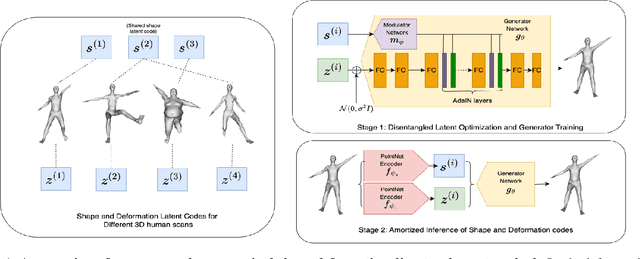

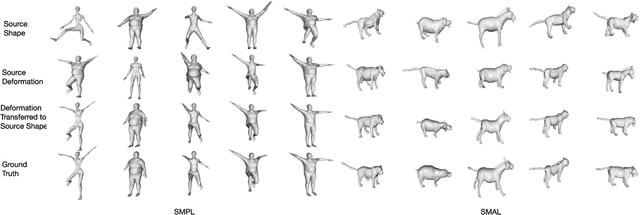
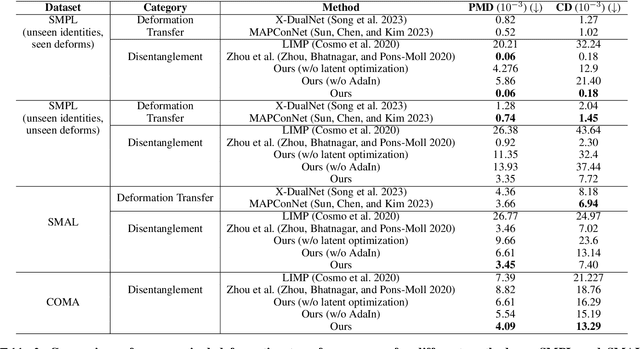
Abstract:In this work, we propose a disentangled latent optimization-based method for parameterizing grouped deforming 3D objects into shape and deformation factors in an unsupervised manner. Our approach involves the joint optimization of a generator network along with the shape and deformation factors, supported by specific regularization techniques. For efficient amortized inference of disentangled shape and deformation codes, we train two order-invariant PoinNet-based encoder networks in the second stage of our method. We demonstrate several significant downstream applications of our method, including unsupervised deformation transfer, deformation classification, and explainability analysis. Extensive experiments conducted on 3D human, animal, and facial expression datasets demonstrate that our simple approach is highly effective in these downstream tasks, comparable or superior to existing methods with much higher complexity.
Accumulative SGD Influence Estimation for Data Attribution
Oct 30, 2025Abstract:Modern data-centric AI needs precise per-sample influence. Standard SGD-IE approximates leave-one-out effects by summing per-epoch surrogates and ignores cross-epoch compounding, which misranks critical examples. We propose ACC-SGD-IE, a trajectory-aware estimator that propagates the leave-one-out perturbation across training and updates an accumulative influence state at each step. In smooth strongly convex settings it achieves geometric error contraction and, in smooth non-convex regimes, it tightens error bounds; larger mini-batches further reduce constants. Empirically, on Adult, 20 Newsgroups, and MNIST under clean and corrupted data and both convex and non-convex training, ACC-SGD-IE yields more accurate influence estimates, especially over long epochs. For downstream data cleansing it more reliably flags noisy samples, producing models trained on ACC-SGD-IE cleaned data that outperform those cleaned with SGD-IE.
Semi-MoE: Mixture-of-Experts meets Semi-Supervised Histopathology Segmentation
Sep 17, 2025Abstract:Semi-supervised learning has been employed to alleviate the need for extensive labeled data for histopathology image segmentation, but existing methods struggle with noisy pseudo-labels due to ambiguous gland boundaries and morphological misclassification. This paper introduces Semi-MOE, to the best of our knowledge, the first multi-task Mixture-of-Experts framework for semi-supervised histopathology image segmentation. Our approach leverages three specialized expert networks: A main segmentation expert, a signed distance field regression expert, and a boundary prediction expert, each dedicated to capturing distinct morphological features. Subsequently, the Multi-Gating Pseudo-labeling module dynamically aggregates expert features, enabling a robust fuse-and-refine pseudo-labeling mechanism. Furthermore, to eliminate manual tuning while dynamically balancing multiple learning objectives, we propose an Adaptive Multi-Objective Loss. Extensive experiments on GlaS and CRAG benchmarks show that our method outperforms state-of-the-art approaches in low-label settings, highlighting the potential of MoE-based architectures in advancing semi-supervised segmentation. Our code is available at https://github.com/vnlvi2k3/Semi-MoE.
FusionMAE: large-scale pretrained model to optimize and simplify diagnostic and control of fusion plasma
Sep 16, 2025Abstract:In magnetically confined fusion device, the complex, multiscale, and nonlinear dynamics of plasmas necessitate the integration of extensive diagnostic systems to effectively monitor and control plasma behaviour. The complexity and uncertainty arising from these extensive systems and their tangled interrelations has long posed a significant obstacle to the acceleration of fusion energy development. In this work, a large-scale model, fusion masked auto-encoder (FusionMAE) is pre-trained to compress the information from 88 diagnostic signals into a concrete embedding, to provide a unified interface between diagnostic systems and control actuators. Two mechanisms are proposed to ensure a meaningful embedding: compression-reduction and missing-signal reconstruction. Upon completion of pre-training, the model acquires the capability for 'virtual backup diagnosis', enabling the inference of missing diagnostic data with 96.7% reliability. Furthermore, the model demonstrates three emergent capabilities: automatic data analysis, universal control-diagnosis interface, and enhancement of control performance on multiple tasks. This work pioneers large-scale AI model integration in fusion energy, demonstrating how pre-trained embeddings can simplify the system interface, reducing necessary diagnostic systems and optimize operation performance for future fusion reactors.
MEGG: Replay via Maximally Extreme GGscore in Incremental Learning for Neural Recommendation Models
Sep 09, 2025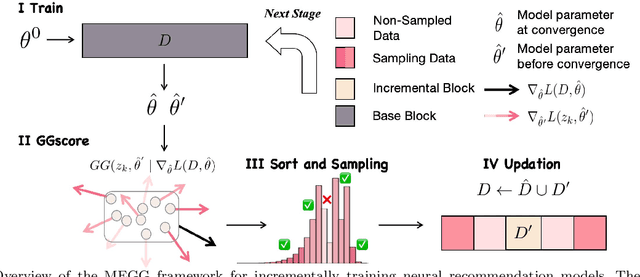
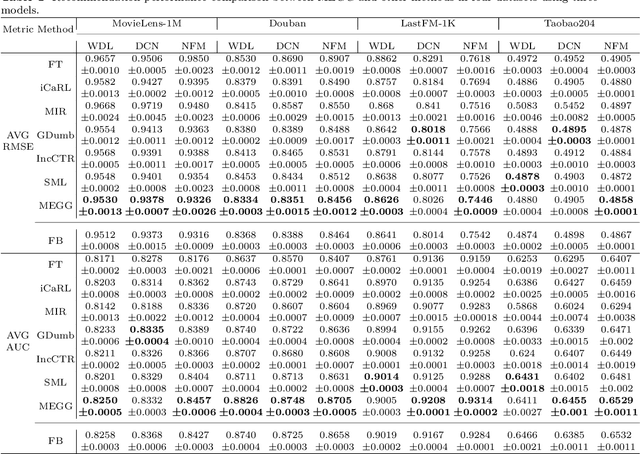
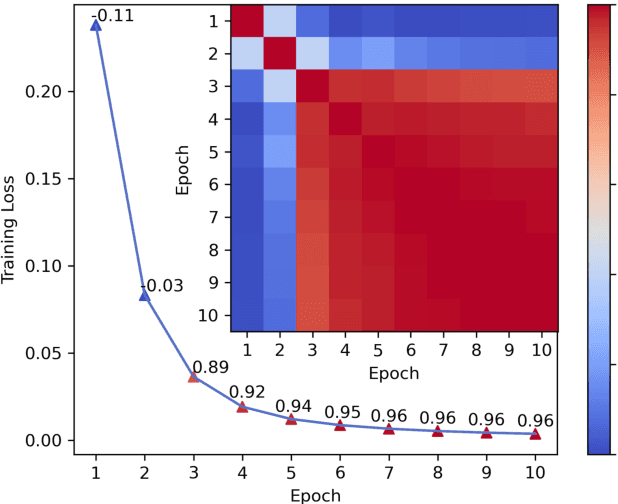
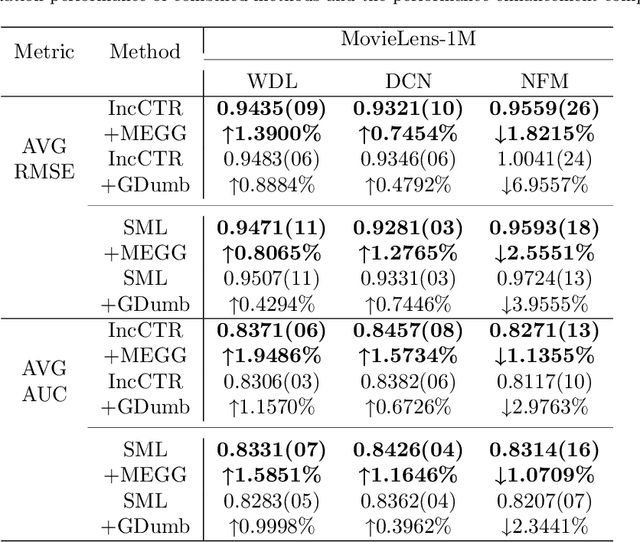
Abstract:Neural Collaborative Filtering models are widely used in recommender systems but are typically trained under static settings, assuming fixed data distributions. This limits their applicability in dynamic environments where user preferences evolve. Incremental learning offers a promising solution, yet conventional methods from computer vision or NLP face challenges in recommendation tasks due to data sparsity and distinct task paradigms. Existing approaches for neural recommenders remain limited and often lack generalizability. To address this, we propose MEGG, Replay Samples with Maximally Extreme GGscore, an experience replay based incremental learning framework. MEGG introduces GGscore, a novel metric that quantifies sample influence, enabling the selective replay of highly influential samples to mitigate catastrophic forgetting. Being model-agnostic, MEGG integrates seamlessly across architectures and frameworks. Experiments on three neural models and four benchmark datasets show superior performance over state-of-the-art baselines, with strong scalability, efficiency, and robustness. Implementation will be released publicly upon acceptance.
 Add to Chrome
Add to Chrome Add to Firefox
Add to Firefox Add to Edge
Add to Edge